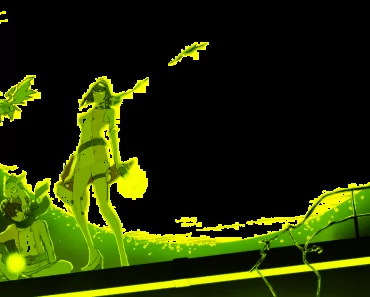In Greek mythology, Pandora opened a forbidden box, unleashing chaos that could never be resealed. On June 17, 2025, the Kenyan state pried open its own Pandora’s box—one lined not with myth, but with rubber bullets, viral footage, and the blood of innocents. The catalyst: the death of 31-year-old teacher and blogger Albert Ojwang, who perished in police custody on June 8 under suspicious and brutal circumstances. His autopsy told a story the police tried to suppress: blunt force trauma, not self-inflicted harm.
But this week’s rage is about more than one man. It’s about a state addicted to violence, a people long silenced rediscovering their voice, and a brutal symmetry—protests reigniting exactly one year after the Parliament breach of June 25, 2024, where dozens were killed and disappeared under the guise of restoring order.The nation now prepares to mark June 25, 2025, as not just a day of remembrance, but of renewed resistance. A “total shutdown” is brewing online, and protests have already erupted in Nairobi, Mombasa, and Mwiki. This article breaks down the some of the most critical events of the past week.
The Mask Vendor Shooting That Shocked a Nation
It was just past 2:00 p.m. on June 17 when police shot Boniface Kariuki, a 22-year-old mask vendor, near Imenti House on Nairobi’s Moi Avenue. He wasn’t protesting. He was walking away. Footage from Citizen TV and other bystanders captured two police officers: Klinzy BarasaMasinde and Duncan Kiprono—first striking Kariuki, then Masinde firing a long-barreled weapon at close range. The projectile, likely a rubber bullet, entered his skull through the left temple. Kariuki was rushed to Kenyatta National Hospital (KNH), where he underwent multiple surgeries. As of June 21, he remains unconscious, paralyzed on the left side, with brain activity registering at just 2/15.
His parents, hawkers from Murang’a, have been keeping a vigil while facing a medical bill north of KES 1 million. Worse, Jonah Kariuki—Boniface’s father—was scammed out of KES 200,500 by conmen posing as Social Health Authority officials. Despite viral footage and public outcry, no government official has visited them. The police have since interdicted and detained Masinde and Kiprono for 15 days pending murder charges—but no photos of their arrest have surfaced. Skepticism grows.
The Return of Goons: State-Backed Chaos in the CBD
As protests swelled, state-sanctioned goons—some armed with whips, machetes, and metal rods—descended on the city, attacking peaceful protesters and looting shops with near-impunity. Footage showed attackers looting stores along River Road, Tom Mboya, and Kenyatta Avenue. One viral video posted showed a gang of goons outside City Hall chanting, claiming “Sakaja tumechunga jiji“, referring to Nairobi Governor Johnson Sakaja. Though unverified, the implication ignited a firestorm. The Law Society of Kenya and multiple MPs condemned the use of hired violence—a chilling throwback to the Moi-era crackdown tactics of the ’80s and ’90s that spawned the infamous Mungiki.
Mombasa Protests: Small but Resolute
On June 18, Mombasa youths took to the streets—marching from Kibarani Market to TomMboya Street—to protest police brutality and support Nairobi demonstrators. Their march was largely peaceful, disciplined, and intentional. Protesters handed a petition to the Independent Policing Oversight Authority (IPOA), demanding investigations into Ojwang’s death. Four protesters, including members of the Communist Party of Kenya, were arrested for “illegal assembly” but released on bond. Despite the intimidation, voices like Ali Said, Mwero Msagha, and Harun Kwamboka ensured Mombasa was counted in this national reckoning.
Digital Vigilantes: OSINT and the Power of the People
In the hours following the shooting of Boniface Kariuki, ordinary Kenyans turned into digital investigators. Harnessing Open Source Intelligence (OSINT)—the practice of collecting and analyzing publicly available data such as videos, images, social media posts, and geolocation tags—activists on X (formerly Twitter) combed through footage from Citizen TV and bystanders, matching uniforms, landmarks, timestamps, and even weapon types.
Within five hours, OSINT experts had identified Officer Klinzy Barasa Masinde as the shooter—well ahead of any official confirmation by the police. They triangulated his identity using slowed-down footage, comparisons to known police ranks, and metadata from earlier protest clips. This surge in digital sleuthing wasn’t random—it was inspired in part by the BBC’s explosive documentary Blood Parliament, released earlier this year. The investigation used similar open-source methods to trace state culpability in the June 2024 killings during the Parliament breach. That documentary not only exposed the depth of impunity but also empowered Kenyans with the know-how and confidence to do their own digital accountability work.
Mwiki Erupts After Another Body is Found
Barely three days after the CBD protests, tragedy struck again. On June 20, 19-year-old Joshua Steven was shot dead by police during anti-femicide demonstrations in Mwiki, Kasarani. The protests were triggered by the horrific rape and mutilation of 18-year-old Abigael Wina Wanjiku, found dead in her home on June 19.
Amateur footage captured an officer shooting Joshua as he sought shelter in a gas shop. The officer fled on a motorcycle. Joshua died en route to the hospital. While IPOA has launched an investigation, no arrest has been made. Online confusion surrounding Joshua’s identity—some calling him Joshua Nderitu—underscores the state’s opacity. Hashtags like #JusticeForJoshuaSteven and #JusticeForAbby flooded timelines, but residents were not content with virtual justice.
Of Shrines, Paralysis, and Persistent Pain
Outside Imenti House, where Kariuki was shot, a shrine now stands—white roses, handwritten notes, and folded newspapers form a delicate but defiant tribute. Meanwhile, 16 others were injured during the week, including Philip Oketch, a Kenyatta University student shot in the arm and neck. The National Archives, Nation Centre, and Kimathi Street became flashpoints as police unleashed rubber bullets and tear gas.
The ghosts of last year’s June 25 Parliament breach—when Gen Z protesters were gunned down, abducted, and labeled terrorists—hover over 2025 like a storm cloud.Calls for a “Total Shutdown” on June 25, 2025, grow louder. Activists say they’ll take to the streets not just to remember Ojwang, Kariuki, Joshua, and Abby—but to demand a reckoning with a government they say has grown deaf to their cries and blind to its own brutality.







